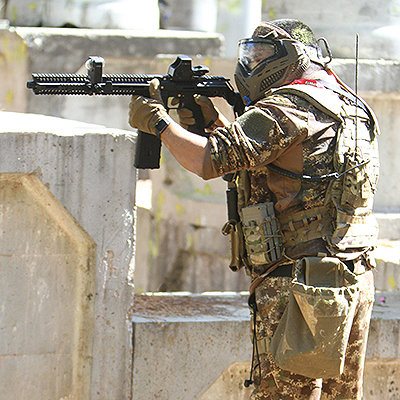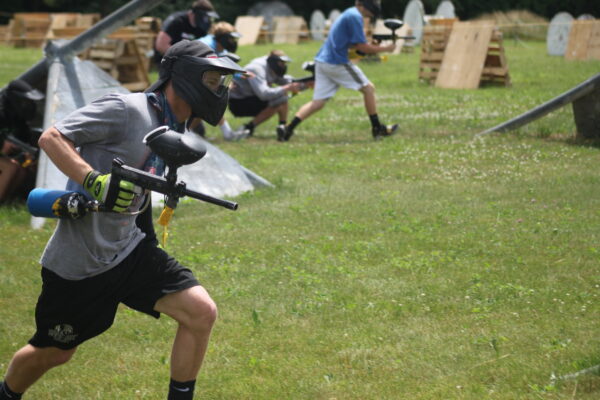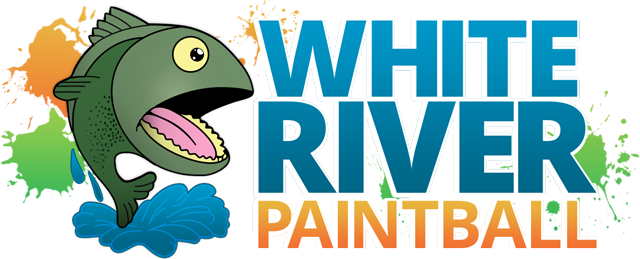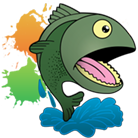Which Paintball “Role” Is the Best for You?
Paintball isn’t just about speed and firepower—it’s a fast-paced, strategic game where knowing your role can mean the difference between leading your team to victory or heading back to the respawn zone. Whether you’re a seasoned player or new to the sport, finding the right paintball role to match your personality, playstyle, and skill level can transform your experience on the field.
In this guide, we’ll break down the most common paintball roles, highlight their strengths and challenges, and help you decide which is the best paintball position for you.
Much like in team sports or military simulations, paintball works best when every player understands their role. Each position on the field contributes to a broader team strategy. Are you the aggressive front-runner? A stealthy flanker? Or the calm tactician at the back? Choosing the right role helps you:
- Play more effectively
- Communicate better with your team
- Have more fun with a role that fits your natural strengths
We see hundreds of players each week—from first-timers to tournament-level pros—and one of the most common questions we get is: “What position should I play?” Let’s break it down.
1. Front Player / Rusher

Best For: Aggressive players who thrive under pressure
Gear Needed: Lightweight marker, minimal gear for fast movement
The Front Player (also called the “Rusher” or “Frontman”) charges ahead to gain ground early in the game. They often dive into bunkers, make fast sprints, and take on the most direct confrontations. If you like to stay on the move and don’t mind getting tagged every now and then, this could be your perfect match.
Pros:
- First to engage enemies
- Key to controlling the pace of the game
- High adrenaline, fast gameplay
Cons:
- High risk of being hit early
- Requires quick decision-making and strong awareness
2. Mid-Player / Support
Best For: Versatile players who want to balance action and strategy
Gear Needed: Balanced marker setup, good communication tools
The Mid-Player holds the center ground—literally and figuratively. They support front players by providing cover fire and helping direct team movement. This role is great for players who want a mix of combat and coordination without constantly being on the front lines.
Pros:
- Flexible and adaptable role
- Central to team coordination
- Good for beginners who want to learn strategy
Cons:
- Less glory than other roles
- Needs strong situational awareness
3. Back Player / Commander
Best For: Strategic thinkers and communicators
Gear Needed: High-accuracy marker, radio (if playing with team comms)
This role acts as the eyes and voice of the team. Positioned behind the action, the Back Player supports others by calling out enemy positions, laying down suppressive fire, and keeping the team organized. They often carry extra paint, a longer-range marker, and may direct plays like a field general. We have more to say about this role here.
Pros:
- High impact on team coordination
- Safer position with fewer direct confrontations
- Ideal for leadership-minded players
Cons:
- Less direct action
- Requires strong communication skills
4. Sniper / Marksman

Best For: Patient, precise players
Gear Needed: Long-range marker, camo or concealment gear
Though not always present in every game format, the Sniper role is perfect for players who like to stay hidden, wait for the perfect shot, and disrupt enemy movements. It’s more common in scenario and woodsball games than in speedball.
Pros:
- Control high-traffic areas from a distance
- Feels tactical and cinematic
- Useful in objective-based games
Cons:
- Not ideal in fast-paced or small-field games
- Requires patience and aim
5. Flanker

Best For: Sneaky, agile players
Gear Needed: Lightweight gear, maybe smoke grenades or distraction tools
The Flanker is the wildcard. They move wide around the field, often unnoticed, and hit the enemy from the side or rear. This role requires speed, stealth, and the ability to act decisively when the moment is right.
Pros:
- Great for turning the tide of battle
- Satisfying to outmaneuver opponents
- Excellent for players who like independence
Cons:
- Easy to get isolated from teammates
- Risky without good timing
So, What’s the Best Paintball Position?
There’s no one-size-fits-all answer—it depends on your personality, fitness level, and how you like to play.
Ask yourself:
- Do I like being in the middle of the action or supporting from the back?
- Am I better at communicating or executing?
- Do I enjoy stealth, speed, or strategy?
Your answers will help guide you to the role that fits best. Still unsure? Try playing a few games in different positions and see what clicks.
Choosing a Role Based on Experience Level
For Beginners:
Start with the Mid-Player or Back Player role. These let you learn the field and game flow without the pressure of being first into the fray.
For Intermediate Players:
Experiment with Flanker and Front Player roles to test your reflexes, aggression, and spatial awareness.
For Advanced Players:
If you’ve mastered multiple roles, consider acting as the Commander or taking on complex Flanker strategies. You may even create hybrid roles that evolve as the game progresses.
The best part of paintball is that it’s not just about shooting—it’s about strategy, teamwork, and choosing the role that lets you shine. Whether you’re running headfirst into the action or providing critical support from afar, there’s a place for every type of player.
Remember: The best paintball position is the one that makes you feel confident, effective, and excited to play.
So next time you gear up at White River Paintball, try stepping into a new role—or embrace the one that feels like home. Either way, you’ll be one step closer to becoming the MVP your team didn’t know they needed.




